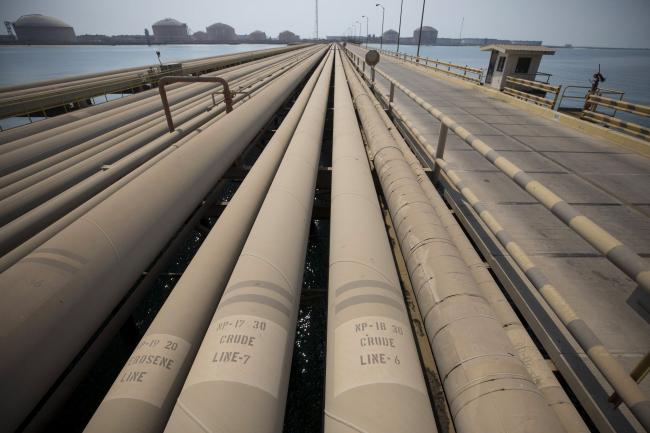(Bloomberg) -- Oil rose as the U.S. delayed sanctions against Huawei Technologies Co., offering a hint of progress in its trade war with China, and a drone attack in Saudi Arabia highlighted simmering Middle East tension.
Futures in New York jumped as much as 2.2% to trade above $56 a barrel. The U.S. will extend exemptions for customers of the Chinese telecom giant for another 90 days, Commerce Secretary Wilbur Ross said on Monday. The move comes less than a week after President Donald Trump delayed new tariffs on consumer goods until mid-December.
Meanwhile, the drone strike by Yemeni rebels on the Shaybah field in Saudi Arabia, the generator of about 1 million barrels a day, was a reminder of the continuing threats in the heart of global crude production. The attack sparked only a small fire and no disruption to output, Saudi Arabian Oil Co. said in a statement.
Crude has fallen around 16% from a late April peak as the U.S.-China trade spat intensified, casting a pall over an already-weak outlook for global growth. While a series of attacks on tankers and energy facilities in the Middle East have provided some temporary support to prices, oversupply remains a key concern.
The Huawei decision “implies that Trump has had enough and he now realizes this is capable of drilling the global economy into the gutter,” said Robert Yawger, futures director at Mizuho Securities USA in New York. “Speculators are jumping in and pushing oil along with every other risk asset.”
Investors got another bullish sign Monday from a report that Germany is preparing fiscal stimulus to head off the chances of a deep recession in Europe’s largest economy.
See also: Saudi Arabia Makes a Promise That It Just Can’t Keep: Julian Lee
West Texas Intermediate crude for September delivery rose 76 cents, or 1.4%, to $55.63 a barrel on New York Mercantile Exchange at 11:04 a.m., after earlier surging as high as $56.07. The contract, which will expire on Tuesday, added 0.7% last week.
Brent for October settlement increased 60 cents to $59.24 a barrel on the ICE (NYSE:ICE) Futures Europe Exchange. The global benchmark is trading at a premium of $3.73 a barrel to WTI, near the smallest gap since March 2018.
Recent phone calls between U.S. and Chinese trade negotiators had been “positive” and more conferences are planned over the next week to 10 days, Larry Kudlow, the White House economic director, said on Sunday. However, President Trump linked the discussions to demonstrations in Hong Kong, saying for the first time on camera that it would be harder to reach a deal if there’s a violent conclusion to the protests.
“Global risk has some stabilization following the soothing comments on trade-talk developments from the U.S.,” said Jens Naervig Pedersen, a senior analyst at Danske Bank A/S in Copenhagen. “It means that the oil market could have time to pay attention to geopolitical developments.”
